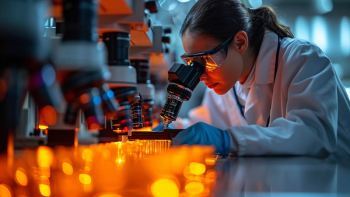
- Pharmaceutical Executive-11-01-2018
- Volume 38
- Issue 11
Patent Protection for Cannabis?
Amid a still-difficult environment for enforcing cannabis-related patents, this article explores some of the types of patent protection available for cannabis-based therapies and inventions.
In nearly all industries, the administrative process of applying for and securing patent protection (i.e., patent prosecution) and the legal process of asserting and defending patents (i.e., patent litigation) have developed in harmony. Not so in the cannabis industry.
Since 1942, the US Patent & Trademark Office (USPTO) has issued cannabis-related patents. Yet the use and sale of cannabis have been illegal in the US for quite some time. While there is a growing trend to legalize cannabis use in several states, cannabis remains classified as an illegal Schedule I drug under the Controlled Substances Act. As a result, two fundamental questions overshadow the industry:
- Will a federal district court enforce a cannabis-related patent?
- What kind of patent protection is available for a cannabis-related invention?
This article addresses the difficulties in enforcing cannabis-related patents and reviews some of the types of patent protection available for cannabis-related inventions.
Enforceability
Whether federal courts will enforce cannabis-related patents has long remained an open question. While state courts may decide certain patent issues, such as a breach of an agreement involving a patent, only federal courts may decide patent infringement cases. The US Drug Enforcement Administration, however, classifies cannabis as an illegal Schedule I drug under the Controlled Substances Act, which raises the question of whether a federal district court would enforce a cannabis-related patent.
To explain, according to the Federal Rule of Civil Procedure 11(b), by signing a complaint alleging patent infringement, a patent owner’s attorney certifies that the patent owner has, or will likely discover, evidence that the defendant is infringing the asserted patent(s). That is, if given a day in court, the patent owner will be required to submit evidence that the defendant is illegally making, using, offering to sell, selling, or importing into the US the patent-protected cannabis-related invention.
Patent owners, other than non-practicing entities, may also reveal during litigation that they practice their own patents, and how they do so, again detailing activities that are illegal under federal law to a federal judge. Furthermore, since most litigations settle, the parties may submit a proposed settlement agreement to the federal district court, under which the alleged infringer may obtain a license to make, use, and/or sell the cannabis-related invention, again, in violation of federal law. Accordingly, many members of the cannabis industry have been reluctant to bring their patent disputes to federal court.
The industry’s ears perked up on July 30, when United Cannabis Corporation ("UCANN") filed a complaint for patent infringement against Pure Hemp Collective Inc. ("Pure Hemp") in the US District Court for the District of Colorado. In its complaint, UCANN, which bills itself as "a biotechnology company specializing in the development of cannabis as a medicine," asserted only one patent: U.S. Patent No. 9,730,911 ("the '911 Patent"). The '911 Patent claims various liquid formulations of highly enriched extracts of plant cannabinoids and has seven independent claims. The first six independent claims describe "A liquid cannabinoid formulation, wherein at least 95% of the total cannabinoids" is/are (1) tetrahydrocannabinolic acid (THCa), (2) tetrahydrocannabinol (THC), (3) cannabidiol (CBD), (4) THCa and cannabidiolic acid (CBDa), (5) THC and CBD, and (6) CBD, cannabinol (CBN) and THC, respectively.
The industry lit up again, more recently, when the Department of Justice (DOJ) and Drug Enforcement Administration announced that Epidiolex, “the first FDA-approved drug made from the cannabis plant,"1 was reclassified as a Schedule V drug. As the DOJ stated in its Sept. 27 press release, Epidiolex is approved “for the treatment of seizures associated with two rare and severe forms of epilepsy, Lennox-Gastaut syndrome and Dravet syndrome, in patients two years of age and older.”2
It is too early to know how the court will treat the UCANN case and whether the reclassification of Epidiolex will have any bearing on that issue. The cannabis IP bar and interested members in the industry should remain attentive for any clues as to how the litigation will be resolved. If it becomes clear from the UCANN litigation that district courts will decline to enforce cannabis-related patents, companies in the cannabis industry may be better off protecting their inventions as trade secrets.
Obtaining patent protection
So long as enforcing cannabis-related patents remains a possibility, patenting cannabis-derived medicine remains a worthwhile investment. Even the federal government applied for and obtained a cannabis-related patent: in 2003, the USPTO issued US Patent No. 6,630,507, which claims methods of treating diseases comprising administering cannabinoids.
Although patent law prohibits patent protection for natural products under 35 U.S.C. §101, there is a wide variety of cannabis-related innovations for which companies may seek patent protection. These innovations include methods of treating or ameliorating diseases or symptoms of disease (e.g., epilepsy or chronic pain), compositions (e.g., topical creams or smoking products), plants (e.g., new cannabis strains or modified cannabis), consumption devices (e.g., vaporizers or, nebulizers), and methods of selecting cannabis strains or extraction and processing improvements.
Multiple types of patent protection for a single product are also available. For example, design patents may be obtained to protect the ornamental features of a new and non-obvious design for bottles, delivery devices, or packaging.
Plant patents are also available. Plant patents “may be granted to anyone who invents or discovers and asexually reproduces any distinct and new variety of plant.”3 The USPTO defines “asexually propagated plants” as “those that are reproduced by means other than from seeds, such as by the rooting of cuttings, by layering, budding, grafting, inarching, etc." Plant patents are limited to a single claim directed to a particular strain of the plant but these patents can be instrumental to protect the “crown jewels” of a cannabis company.
Eric Furman, PhD, is a partner at Knobbe Martens. He can be reached at
References
1. Schedules of Controlled Substances: Placement in Schedule V of Certain FDA-Approved Drugs Containing Cannabidiol, 83 Fed. Reg. 48,950 (Sept. 28, 2018)
2. Press Release, Department of Justice, FDA-Approved Drug Epidiolex Placed in Schedule V of Controlled Substances Act (Sept. 27, 2018),
3. U.S. PATENT & TRADEMARK OFFICE, GENERAL INFORMATION CONCERNING PATENTS, (Oct. 2015),
Articles in this issue
about 7 years ago
Pharm Exec's 2019 Pipeline Reportabout 7 years ago
High-Risk Marketing Violations Draw Scrutinyabout 7 years ago
Biopharma Business Checkabout 7 years ago
Steadying the Path of Good Scienceabout 7 years ago
Southeast Biotech: Rising Tall in the Valleyabout 7 years ago
Fighting for a Streamlined European HTA Schemeabout 7 years ago
Stunted Innovation in Drug Development?about 7 years ago
Pharmaceutical Executive, November 2018 Issue (PDF)about 7 years ago
Country Report: AlgeriaNewsletter
Lead with insight with the Pharmaceutical Executive newsletter, featuring strategic analysis, leadership trends, and market intelligence for biopharma decision-makers.




